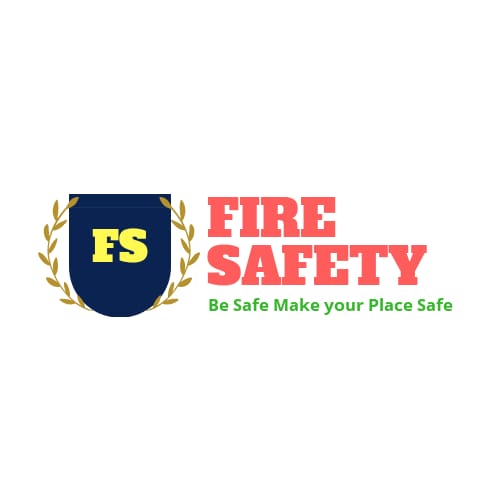25 Important NEBOSH IGC Defination Every Safety Officer need to know
पिछली कुछ परीक्षा में 25 लगातर पूछे गए NEBOSH IGC के Defination जिससे आप को याद रखना बहोत जरुरी है।
Here you can find some most important Defination which has highly recommendate for NEBOSH IGC New Syllabus.
1. HEALTH
As per WHO (World Health Organisation) 'Health' is the state of complete metal,physical and social well-being and not merely the absence of disease or infirmity.For Example - Asbestos creates a health risk because if you inhale asbestos dust you may contract lung cancer ( a disease) at some stage later in life (10-20 Year's ), Health relates not only to physical ill-health but also to psychological ill-health (Stress,nervous,break down).
2. SAFETY
The Absence of risk of serious personal injury.For Example- walking under a load suspended from a crane during a lifting operation is not safe because if the load falls serious personal injury or dealth could result,Staying out of the danger area result in safety.
3.WELFARE
Access to basic facilities such as toilet facilities,handwash stations,changing room,rest rooms,and places where food can be prepared and eaten in relatively hygenic conditions and drinking water and basic first aid provision.4.HAZARD
Someting/Anything with the potential to cause harm.For Example- Electricity, work at height, chemical,vehicles.
5.RISK
The Likelihood that a hazard will cause harm in combination with the severity of injury damage or loss that might foreseeably occur.For Example- Electrocution,Falling from height,Toix,Collision
6.ENVIRONMENT PROTECTION
A Measures used to prevent harm to the environment of the world.It prevents harm to air,water,land and natural resources providing protection to flora,fauna and human being and thier inter-relationships.7.CIVIL LAW
The branch of law concerned with compensating individuals for the wrong done to them.8.THE EMPLOYER
The Employer in this Context is normally on organisation and is sometimes Referred to as the 'Corporate body'.9.MORALE
The level of Commitment ,energy,and enthusiam that a workforce has for the work being done.10. ERGONOMICS
The study of the relationship between the worker,the work that they are doing and the environment in which they are doing it.11. ATTITUDE
Attitude is a person's point of view or way of looking at somthing,how they think and feel about it.12.MOTIVATION
A person's drive towards a goal.The thing that is making them do what they do.13.PERCEPTION
It can be defined as the way in which a person interprets information detected by thier senses.14.COMPETENCE
Competence is a combination of knowledge ,experience,training and ability that bring a person to a level where they are able to perform to an acceptable standard and they are aware of thier own limitations. (KATE)15.HEALTH & SAFETY 'CULTURE'
The Safety culture of an organisation is the way that all the people within the organisation think anf feel about health and safety and how this translates into behaviour.It can be defined as " The shared attitudes,values,beliefs,and behaviours relating to health and safety.
16.Peer-Group-Pressure
When people are put together into group they interact,some Individuals have a lot of influence over the group;other will have little influence.In this way a hierarchy develops within the groups. Certain ways of behaving will become the norm,which will often be established by the more influential members of the group.A person wishing to become a member of the group will have to comply with group norms.This pressure to comply with group norms is "Peer-Group-Pressure".17.COMMUNICATION
Communication can be defined as 'the process of delivering information froma sender to a reciepent'.To be truly effective the correct information has to the transmitted,received,and understood.
There are three principal delivery media for communication information is
1.Verbal or Oral - Spoken word
2.Written -Written Word
3.Graphic - pictures,symbols and pictogram.
18. CONSULTING
Consulting the two way exchange of information and opinion between the employer and workers so that the best course of action can be agreed uopn.19.INFORMING
Providing information to workers in a form that they can understand and then checking that the information has been understiid. The information flow us onw-way and the employer does not have to take any notice of feedback.20. TRAINING
Training can be considered as the planned,formal process of acquiring and practising knowledge and skills in a relatively safe environment.21. FIRST-AID
Immediate help given to the victim of sudden injury or illness using minimum medical equipment or available resources.The basic role of first-aiders is to keep the injured casualty alive until professional medical assistance can take over.
Reffrered as 3 P's
Preserve -Life
Prevent- deterioration
Promote-Recovery
22.RISK ASSESSMENT
A formalised process of identifying hazards, evaluting risk and then either eliminating or controlling that risk to an acceptable level.There are Five steps to Risk-Assessment are given below,,,
1.Identify the potential Hazards,
2.Identify the people who might be harmed and how
3.Evaluate risk and decide on precautions accordingly.
4.Record significant findings and implement them.
5.Review and update as necessary.
23.CHRONIC EFFECT
As a result of exposure to lower levels of substance,over long periods of time and usually weeks,months or year's after exposure began.For Example- Asbestosis occur 10-20 year's after multiple exposures to asbestos.
24.ACUTE EFFECT
As a result of exposure to high levels of the substance ,sometimes over very short periods of time and usually quite quickly after exposure begins. (seconds,Minutes or hours )For Example- Exposure to high concentration of chlorine gas cause immediate irritation to the respiratory system.
25.AUDIT
Audit can be defined as "The Structured process of collecting independent information on the effeciency,effectiveness and reliability of the total health and safety mangement system and drawing up plans for corrective actions.There are two types of audit 1.Internal and 2. ExternalWe will Creates more Defination on upcoming articles.please follow and subscribe for Safety Tips.
Regards,
FireSafetyRevolituon Team






